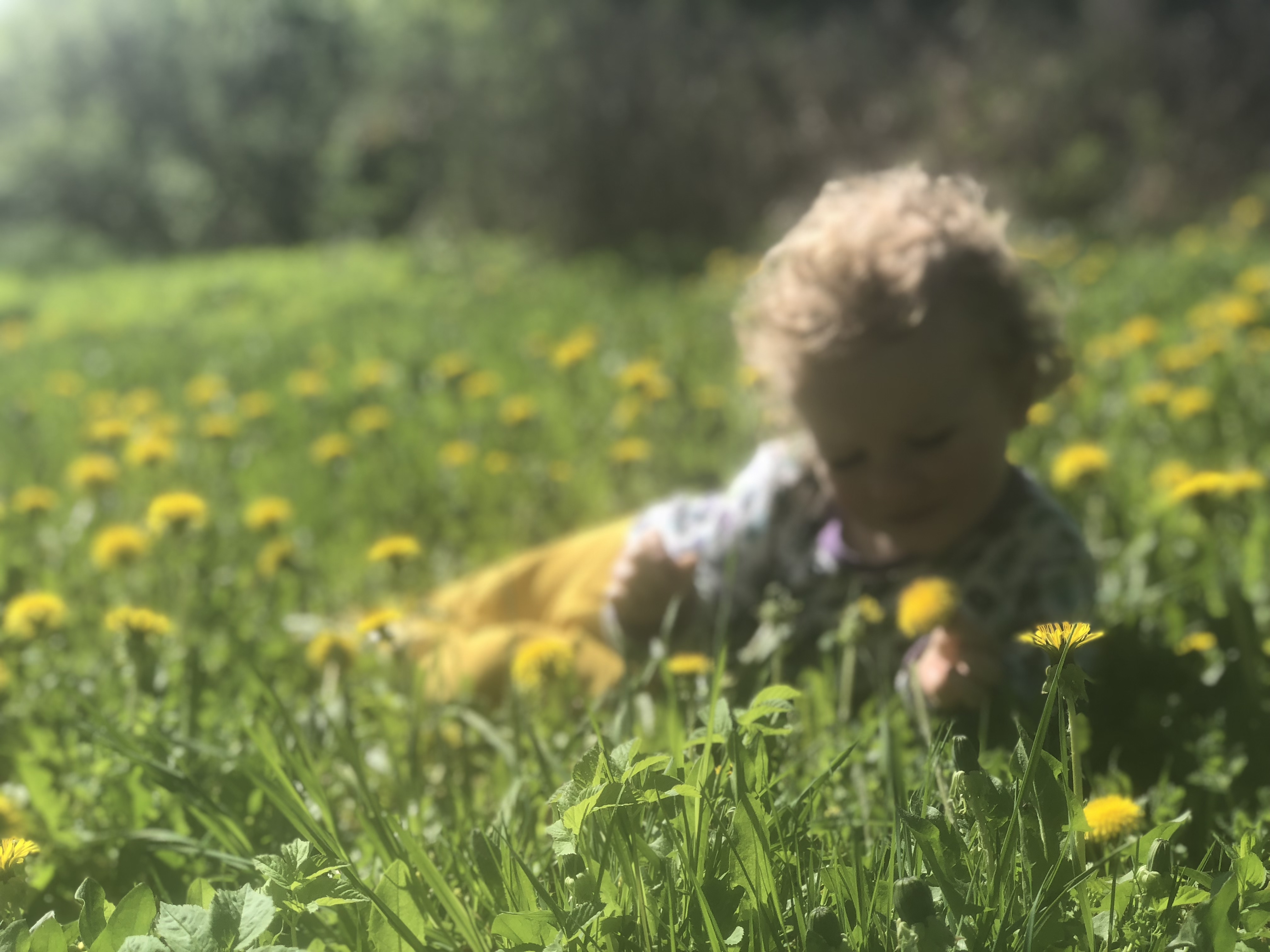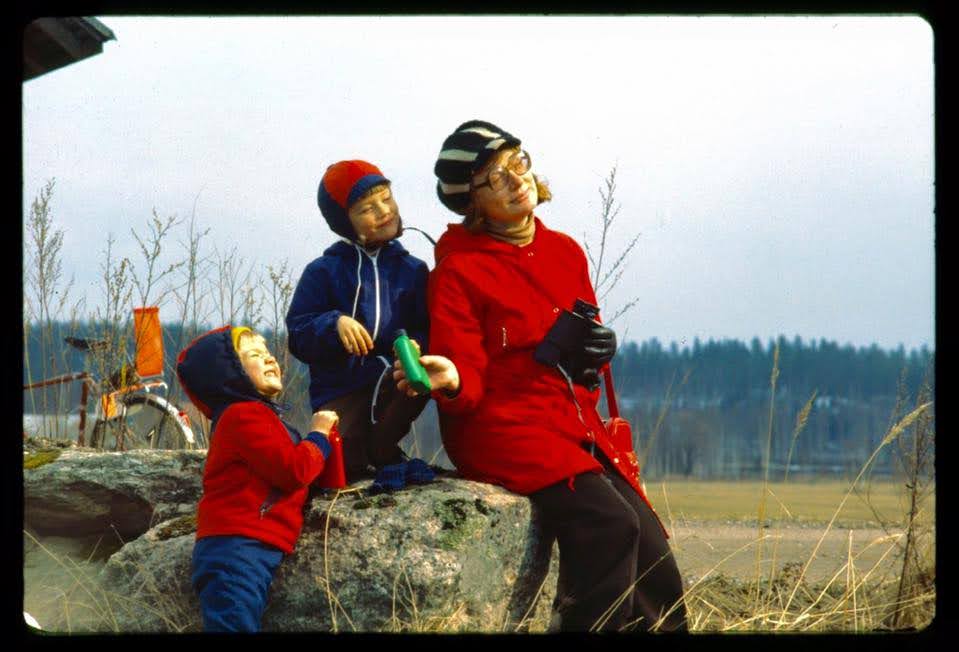In May, spring is at its most beautiful as warmth and sunlight persuade the buds of trees and flowers to bloom. The air is filled with the intoxicating scents of spring: the fragrances of blossoming bird cherry and apple trees blend into the moist spring air. The days lengthen, and the night sky becomes brighter. It’s time to gather the first wild herbs and plant the last seeds.
The Finnish word touko is at least a couple of thousand years old and means spring. It was the time to start the toukotyöt, spring work, i.e. to harness a strong ox to the plough, turn the fields and carry out the spring sowing. In the tropical zodiac, the Sun is plowing its path towards the sign of the Taurus around this time, where it will land on 20th or 21st April.
Maia was the protector of growth and fertility. The Latin origin of the word is “maius,” meaning greater. In Greek, “maîa” refers to a midwife and mother. In Greek mythology, Maia was also the mother of Hermes (known as Mercury in Roman mythology) and the eldest and most significant of the Pleiades sisters. The star cluster Pleiades is known in Finnish as “seulaset.” The Pleiades become visible in the Mediterranean in May, so there is a clear connection between the constellation, the myth of the Maia goddess, and the specific characteristics of the season.
Among others, the Algonquin and Dakota Native Americans refer to May as “Flower Moon,” while members of the Cree call it “Budding Moon” or “Egg Laying Moon”. These names naturally reflect the significant changes occurring in the nature of the Northern Hemisphere: tree buds swell, and trees and flowers bloom.
Wiccans celebrate Beltane at the beginning of May. It is an ancient Celtic celebration preceding the summer solstice, observed in Ireland, Scotland, and other Celtic cultures. It symbolizes the beginning of spring and the rebirth of nature. The celebration involves various rituals and ceremonies, including dancing, singing, and lighting fires.
Although few of us live in environments dictated by agricultural rhythms anymore, the nature around us still follows ancient cycles of life. Observing and identifying with these cycles brings great joy and satisfaction even to city folks. So, it’s time to get our hands dirty, plant something new, and take a walk in the nearby forest to marvel at the blossoming of nature!
May Ritual: Mother’s Day
The roots of the modern Mother’s Day stretch back to the early 20th century in the United States. Anna Jarvis from West Virginia organized a Mother’s Day event after her own mother passed away, as her mother had dreamed of a day to honor all mothers. The day quickly gained broader popularity, and in 1914, the then-president of the United States, Woodrow Wilson, declared the second Sunday of May as the official date for the celebration. It arrived in Finland four years later, and the first Mother’s Day was celebrated in July 1918. It was moved to its current date in 1927.
You can create your own Mother’s Day ritual by following modern traditions: breakfast in bed for Mom, a lovely bouquet of flowers, and a homemade card as a gift. If you don’t resonate with Mother’s Day traditions, you can still remember and honor all the mothers who came before you, whose unbroken ancestral chain has made your life possible on this planet.
Place four objects in front of you to symbolize the four generations, with yourself representing the latest. If possible, learn about the lives of your female ancestors directly along the maternal line (your mother, your maternal grandmother, your maternal great-grandmother). You can also perform the exercise without research, as we all have female ancestors anyway. Symbolically visit each of your female ancestors, or each object, in turn. Share your life with them and thank them for enabling your life as it is now. You can address them by their first name and tell them what you have learned from them or their lives and what you imagine connects you. Do you recognize any resemblance in their pictures to yourself, or are there similarities in your life paths? At the same time, you can forgive your female ancestors if intergenerational traumas have been passed down to you through the maternal line. The ritual is truly touching and can evoke strong emotions. However, its healing power lies in the fact that no matter how difficult our mother-daughter relationship may be, we can acknowledge the gift of life given to us by our female ancestors, which is the most precious gift of all.
May Ritual: Foraging Wild Food

Do you know the power of nettles, the healing energy of raspberry leaves, or the arugula-like taste of young dandelion leaves? And did you know that you can use fireweed like asparagus or make caper-like delicacies from tiny dandelion buds? Springtime nature is full of the most wonderful wild herbs, free superfoods packed with vitamins. Learn to recognize the wild herbs in your local environment with the help of an app or a wild herb book, and enrich your plate and morning tea with the treasures of your own land. Awaken the dormant hunter-gatherer within your body and venture into the wild food forest. By eating food that literally grows at your feet, you’ll get a completely different connection to the environment in which you live. You can think of absorbing the earth’s growth energy into yourself while eating these wonderful young shoots from your own yard or nearby forest.
May New Moon Ritual: Plant a Seed – Figuratively or Literally

The time of the New Moon and the Waxing Moon has been considered the best planting time for those plants that grow upwards. So, choose your favorite herb, flower, or plant seeds and plant them in the ground during the New Moon in May. You can also plant a new metaphorical seed by writing down your goals or growth aspirations precisely during the New Moon. As you observe the growth of your little plant, you can also track the realization of your own dreams by keeping a journal.
May Ritual: Birdwatching and Following the Signs of Spring

One of my cherished childhood memories involves family birdwatching outings. Early in the morning, Mom would pack snacks and pour steaming coffee into a thermos, and we would head out into the slightly chilly morning with binoculars around our necks. Dad knew the birds and skillfully mimicked their songs with his whistling.
Following the signs of spring and focusing on them helps prepare your body for summer and the new growing season. Bring along some good snacks and warm drinks, enough layers to keep warm, binoculars, and some kind of cushion to sit on. Start out before sunrise to have a chance to hear as many different songbirds as possible. Towards the end of the month, you might even hear nightingales and various warblers singing at night. There are great apps available for smartphones that can help you identify bird songs. Keep a record of the birds whose songs you hear.
May ritual: Ukko’s Bushel
Ukon vakat, Ukko’s Bushel, was an ancient Finnish spring festivities honoring Ukko, the god of rain and fertility. The word “vakka” refers to the celebrations and feasts themselves, but also possibly to a birch bark vessel or seed basket used for offerings to Ukko. The main focus of the celebration was drinking beer and wishing for rain at the right time: early summer was often dry, and rain was needed to ensure a good harvest. Based on the notes of Mikael Agricola, who documented Finnish traditions in the 16th century, the festivities may have also escalated into somewhat of orgies, resembling fertility rites found in agricultural cultures around the world. However, if you don’t want to organize actual orgies, you can entertain your friends by offering beer, dancing, and wishing for rain and a fruitful harvest in your own garden.
Would you like to learn more about rituals and live more in tune with the rhythms of nature? I share stories and insights about rituals now also in the form of a newsletter, approximately once a month. Join in!